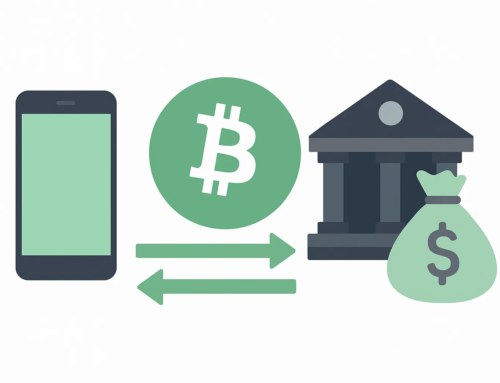What is Aave?
Aave, originally named ETHLend, is an open-source liquidity protocol initially designed to enable interest on deposits and to borrow assets. It is one of the first DeFi projects to enable lending, borrowing, and interest on crypto assets in a decentralized manner. This lending system is built on the Ethereum protocol through a series of smart contracts.
History of Aave
Aave’s company was founded in November 2017 by Stani Kulechov and a team of developers in London but later acquired an office in Switzerland as well. Kulechov was studying law in Helsinki, and it was during his studies that he created Aave, which means “ghost” in Finnish, a symbol of the company and likely a reference to the protocol’s ability to make loans safely and anonymously. Initially, ETHLend was launched with an Initial Coin Offering (ICO) and the company managed to sell 1 billion LEND tokens and make 17 million dollars. The idea was to allow users to post loan requests and offers in a decentralized marketplace and then lend and borrow cryptocurrencies to each other.
ETHLend matched lenders and borrowers with a peer-to-peer system but the system was too slow due to low liquidity and too much time spent matching borrowers and lenders, so progressively ETHLend was losing momentum. During the bear market of 2018 and 2019, the ETHLend team reworked the design, relaunching Aave in early 2020. In a podcast, Kulechov explained that the bear market was one of the best times ETHLend could have gone through, as it provided the team with the opportunity to revamp the concept of decentralized crypto loans, creating Aave. In 2018, the first peer-to-contract protocol appeared, allowing borrowers and lenders to interact directly with a smart contract. 2020 was the year of the official launch of the new version in which the transition from the LEND token to the Aave token was completed and holders of LEND tokens were offered the opportunity to convert them into Aave tokens.
How do Aave works?
Aave is an algorithmic money market, therefore loans are obtained peer-to-contract instead of peer-to-peer.
The system can offer loans to borrowers through its liquidity pools. Liquidity pools are cryptocurrencies deposits that are made available by users who are then called liquidity providers or LPs.
The goal of those who play the role of LP in these Aave pools is to gain benefits, through the interest that is generated every time their cryptocurrencies are borrowed. In addition, it is also possible to use the pools within Uniswap. The goal of this bridge with Uniswap is to bring Uniswap’s liquidity as collateral for Aave loans. The interest rate charged to users depends on the utilization rate of the assets in a pool. If almost all of the assets in a pool are used, the interest rate will be high to convince liquidity providers to deposit more capital. If few assets in a pool are used, the interest rate charged is low to incentivize loan applications. Prices are then defined algorithmically considering the supply and demand for the assets. An idea remarkably similar to the one we can see in Uniswap (both in fact belong to the category of automated money markets).
Aave allows users to borrow in a cryptocurrency other than the one they deposited while getting a regular return.
As with ETHLend, also in Aave all loans are extra-collateralized. This means that if a user wants to borrow $100 in cryptocurrency through Aave, they have to deposit more than that amount.
Due to the volatility of cryptocurrencies, Aave incorporates a settlement process. If the collateral you provide falls below the collateralization ratio specified by the protocol, your collateral may be liquidated. Additionally, a fee is charged in the event of liquidation.
Another important element of Aave is the decentralized governance of the protocol: token holders can intervene in the process and evolution of the protocol by voting to include enhancements or change values within the system.
Aave also allows for unsecured flash loans whereby you can borrow an asset, provided that the amount borrowed (and a fee) is repaid before the end of the transaction. This is something totally new in the traditional financial world, but also in the blockchain world, and is possible thanks to the operation of smart contracts. Basically, what happens is that a loan is scheduled, where we ask for a certain number of tokens of an asset supported by the platform. In return, we will make the payment of that loan within the same operation performed by the smart contract we are programming. In short, during the execution of the smart contract that we enter, we ask for the loan and pay it off, taking the entire execution process of that smart contract as an interim time.
Thus, the goal of AAVE is to create an algorithmic lending marketplace where users can do two things: invest money in pools to create liquidity (this will allow them to offer loans to other users and earn interest in the form of liquidity providers) and create a platform that can offer loans with various guarantees, collateralization options, and operating policies. This is in order to adapt to the needs of its users and different markets.
Conclusions
Decentralized money markets like Aave pave the way for a more open and accessible financial system, and Aave is one of the biggest DeFi projects that allow crypto users to access funds and services transparently and quickly. One of its main advantages is definitely the simplicity of its use at the user level. In fact, since its inception when it was still ETHLend, this protocol has been recognized as one of the most immediate to use within the DeFi space. Aave security is also one of the most studied within the DeFi ecosystem. As one of the first protocols in the ecosystem, its continuous improvement and the study of its smart contracts make it one of the most secure protocols. Definitely, Aave right now represents one of the most useful and reliable crypto protocols, and it can be considered as the flagship cryptocurrency of decentralized finance in recent months with a desirable growth of its value in the near future.
——
Image: Infofefi








